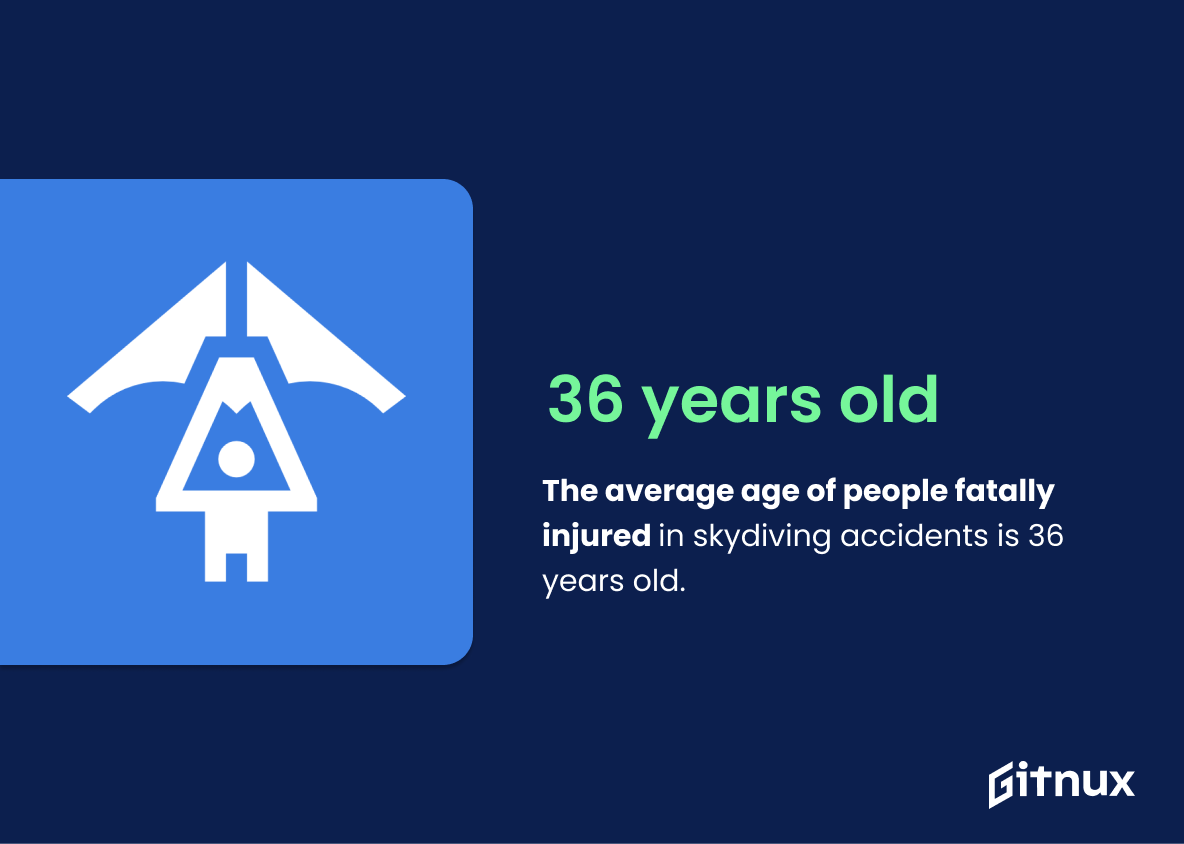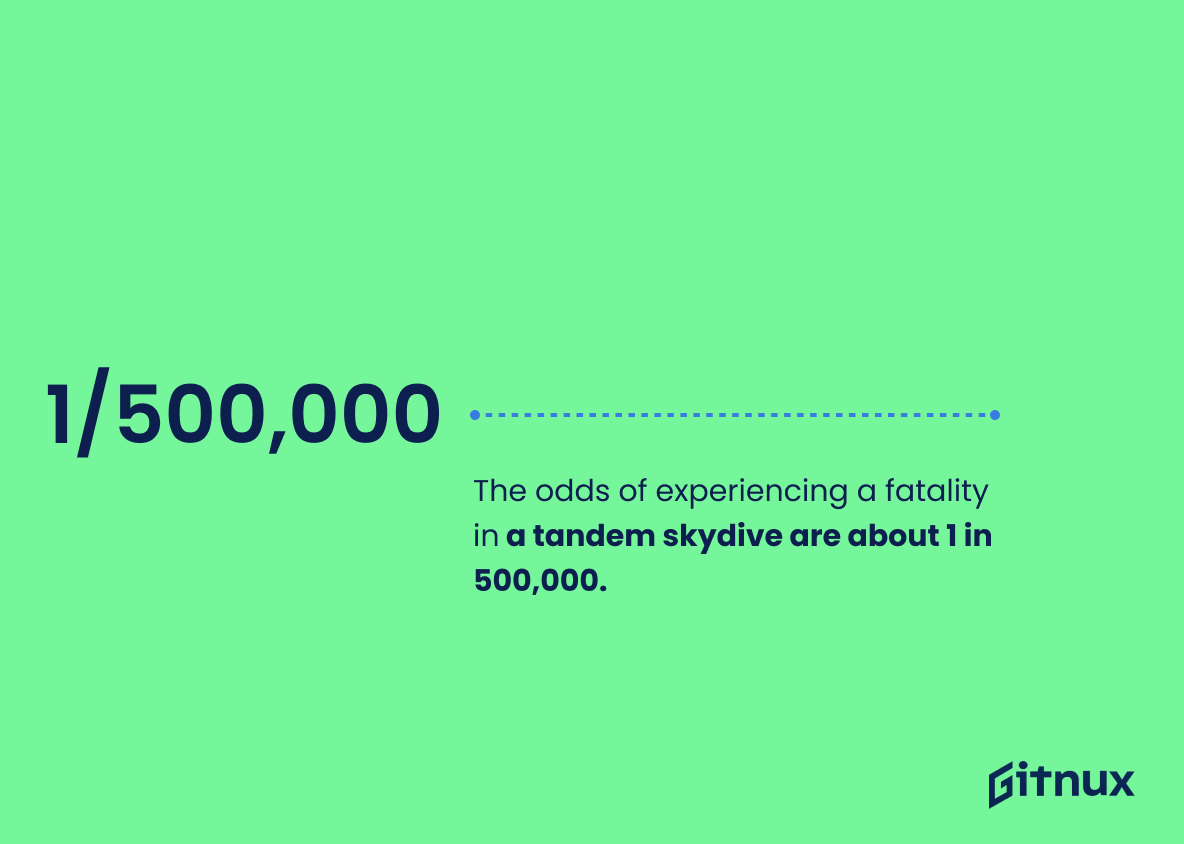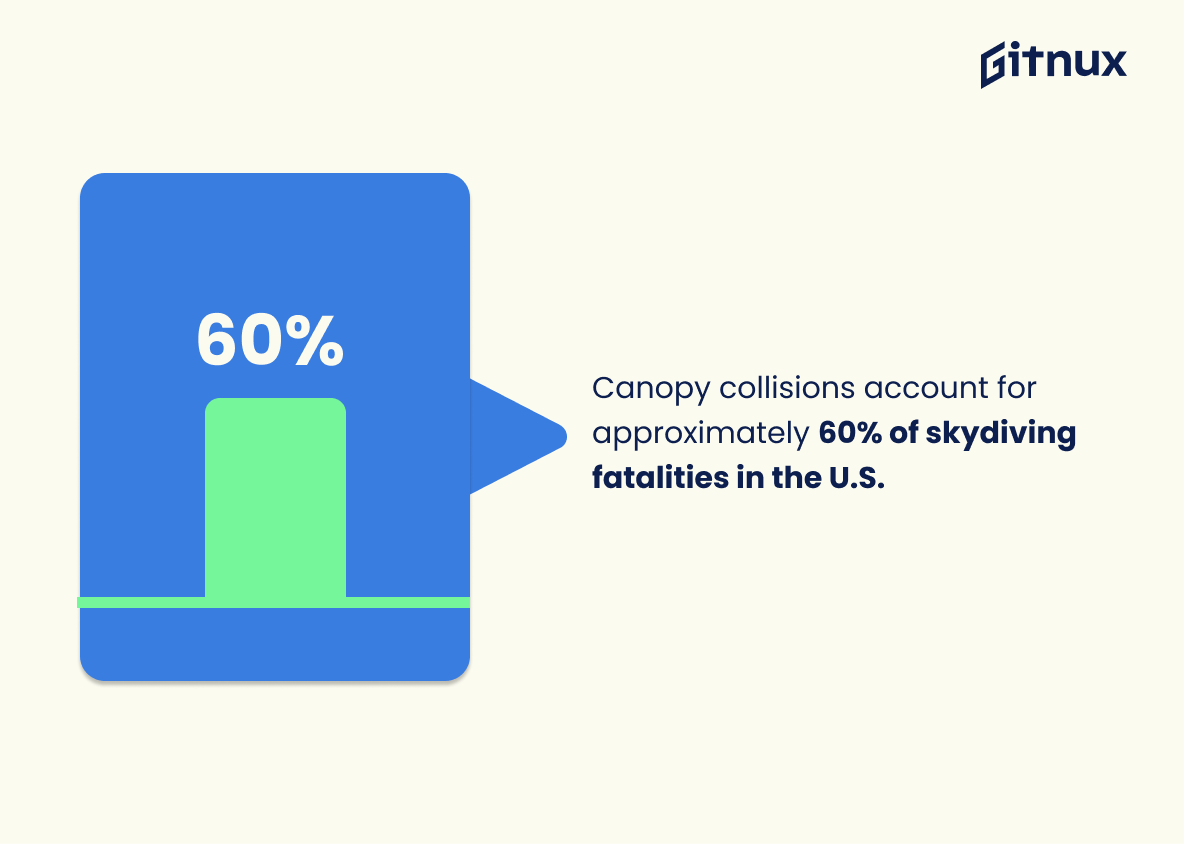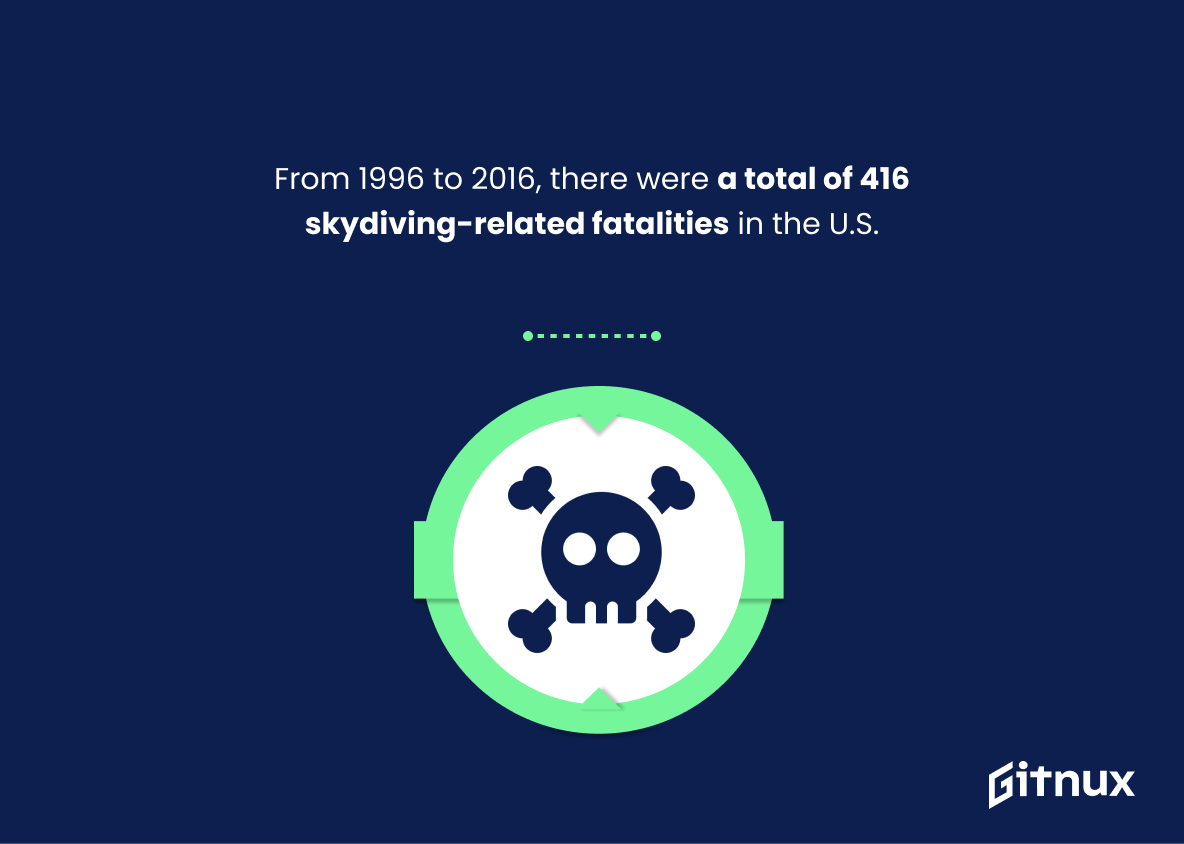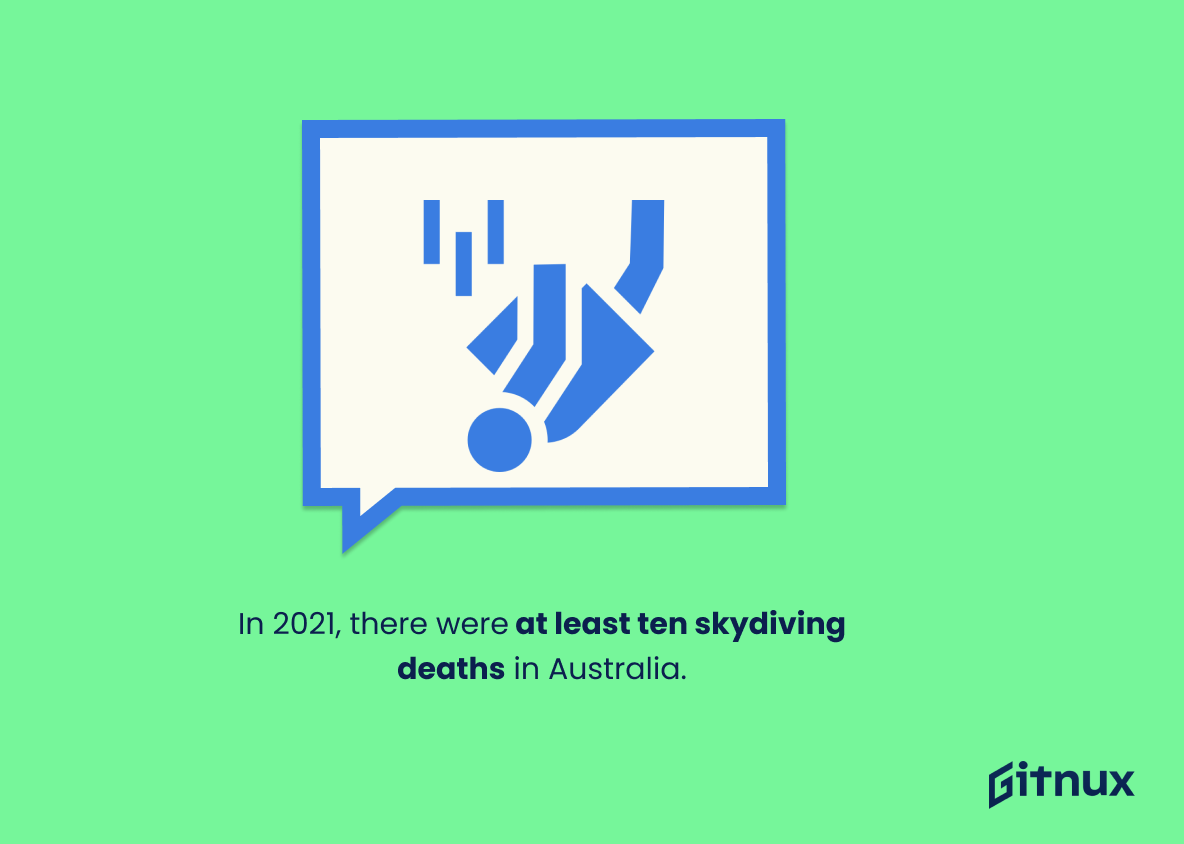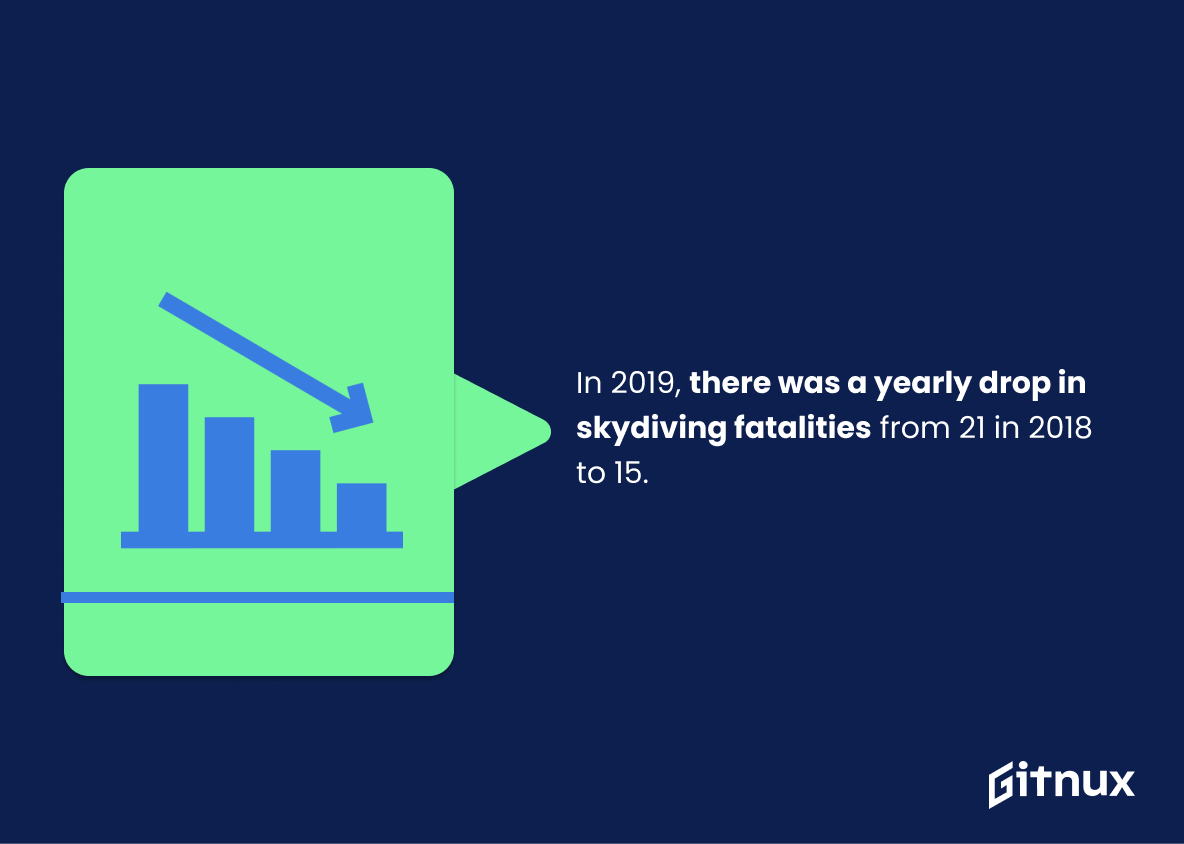Skydiving is an exhilarating and thrilling activity, but it also comes with risks. While the risk of a fatal accident in skydiving is low, understanding the statistics behind these accidents can help you make informed decisions about your safety when participating in this sport.
In this market data report, we will explore some key skydiving danger statistics to give you a better idea of how safe or dangerous skydiving really is.
This statistic is a stark reminder of the risks associated with skydiving. It serves as a reminder that, while skydiving is an exhilarating experience, it is not without its dangers. This statistic can help inform readers of the blog post about the potential risks of skydiving, and can help them make an informed decision about whether or not to take part in the activity.
In 2020, there were only 11 fatal skydiving accidents in the USA.
This statistic is a testament to the safety of skydiving, showing that despite the inherent risks, the activity is still relatively safe. It is an important piece of information to include in a blog post about skydiving dangers statistics, as it provides a sense of reassurance to potential skydivers.
Skydiving Dangers Statistics Overview
The average age of people fatally injured in skydiving accidents is 36 years old.
This statistic serves as a stark reminder of the risks associated with skydiving. It highlights the fact that even experienced skydivers are not immune to the dangers of the sport, and that fatalities can occur at any age. It is a sobering reminder that skydiving is an inherently risky activity, and that safety should always be the top priority.
Between 2000 and 2020, there were a total of 153 parachuting-related deaths in Australia.
This statistic serves as a stark reminder of the risks associated with skydiving. It highlights the fact that, despite the safety measures taken by skydiving operators, parachuting-related deaths still occur in Australia. This statistic is a powerful reminder that skydiving is an inherently dangerous activity and should not be taken lightly.
The odds of experiencing a fatality in a tandem skydive are about 1 in 500,000.
This statistic is a powerful reminder of the relative safety of tandem skydiving. It demonstrates that, despite the inherent risks of the activity, the chances of a fatality occurring are incredibly low. This statistic is an important piece of information for anyone considering skydiving, as it provides reassurance that the activity is relatively safe.
Canopy collisions account for approximately 60% of skydiving fatalities in the U.S.
This statistic is a stark reminder of the risks associated with skydiving. Canopy collisions are a major cause of fatalities in the U.S., highlighting the need for skydivers to take extra precautions when jumping. It is a sobering reminder that skydiving is an inherently dangerous activity and that safety should always be the top priority.
From 1996 to 2016, there were a total of 416 skydiving-related fatalities in the U.S.
This statistic serves as a stark reminder of the risks associated with skydiving. It highlights the fact that, despite the safety measures taken by skydiving companies, there is still a significant risk of death when engaging in this activity. This statistic is a powerful reminder that skydiving is an inherently dangerous activity and should not be taken lightly.
Between 1994 and 2017, there were a total of 181 civilian skydiving deaths in Canada.
This statistic serves as a stark reminder of the risks associated with skydiving. It highlights the fact that, despite the safety measures in place, skydiving can still be a dangerous activity. The 181 civilian skydiving deaths in Canada over the past 23 years is a sobering statistic that should not be overlooked when considering the potential dangers of skydiving.
In 2021, there were at least ten skydiving deaths in Australia.
This statistic is a stark reminder of the risks associated with skydiving. It serves as a warning to those considering taking part in the activity, that there is a real danger of death. It also highlights the importance of taking safety precautions and following the rules when skydiving.
Around 80% of skydiving accidents occur during the landing phase of the jump.
This statistic is a stark reminder of the risks associated with skydiving, particularly during the landing phase. It highlights the importance of taking the necessary precautions and safety measures when skydiving, as the landing phase is often the most dangerous part of the jump. Knowing this statistic can help skydivers make informed decisions about their safety and the safety of those around them.
In 2019, there was a yearly drop in skydiving fatalities from 21 in 2018 to 15.
This statistic is a testament to the progress that has been made in the realm of skydiving safety. It shows that the efforts to reduce the risks associated with skydiving have been successful, and that the sport is becoming safer for those who choose to participate. This is an encouraging sign for those who are considering taking up skydiving, and it is a reminder that the dangers of the sport can be minimized with the right precautions.
Conclusion
Skydiving is an extreme sport that can be dangerous if safety protocols are not followed. However, the statistics show that skydiving fatalities have decreased significantly over time and remain relatively low compared to other activities. The overall fatal incident rate in skydiving is 0.99 per 100,000 jumps, with 70% of accidents resulting from human error rather than equipment malfunction.
Canopy collisions account for approximately 60% of skydiving fatalities in the U.S., while hard landings or malfunctions at a low altitude make up 42.7% of experienced parachutist deaths worldwide. Skydivers should always take necessary precautions when participating in this activity to ensure their own safety as well as those around them
References
0. – https://www.www.skydivelongisland.com
1. – https://www.www.statista.com
2. – https://www.uspa.org
3. – https://www.prezi.com
4. – https://www.www150.statcan.gc.ca
5. – https://www.www.smh.com.au
6. – https://www.www.finder.com.au
7. – https://www.extremesportslaboratory.wordpress.com
8. – https://www.www.dropzone.com
9. – https://www.www.forbes.com
